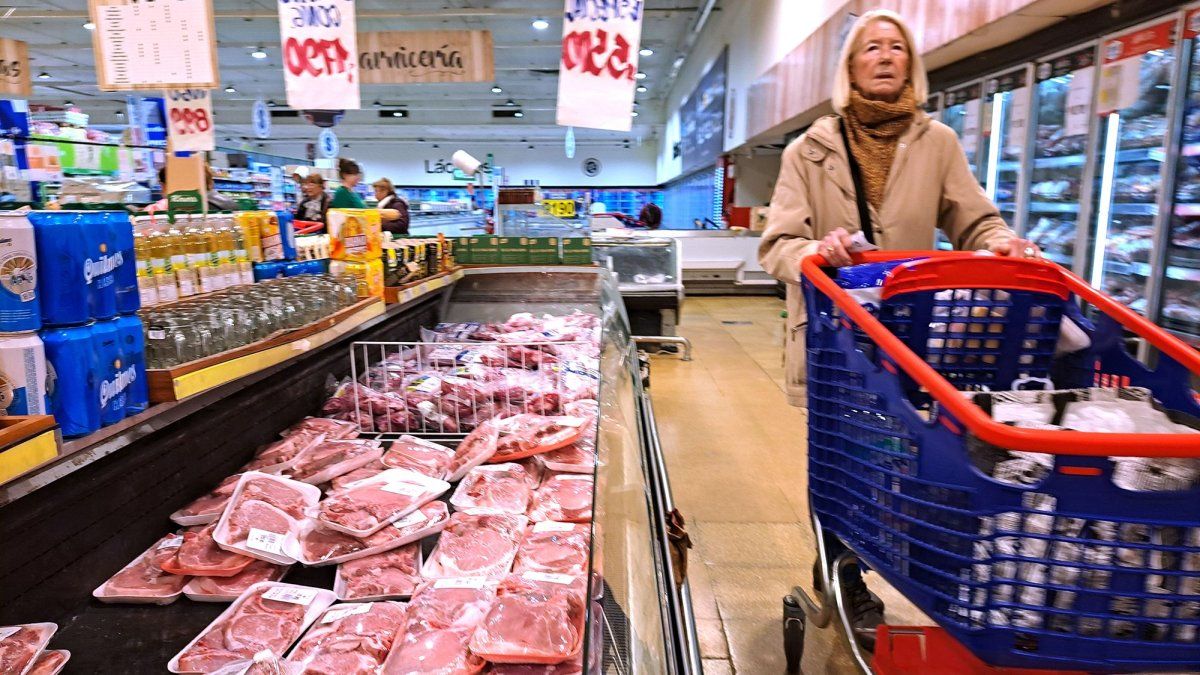He meat consumption has plummeted so far in 2024 and heads towards its biggest drop in a century. This led to its price being reduced by 16% in real terms in the first half of the yearHowever, a report by IERAL It casts doubt on whether this decline will be sustainable over time and could put pressure on inflation in the coming months.
The report from the Mediterranean Foundation Institute highlights that the meat value adjustment variable will be: the rebound in economic activityas well as the change in consumption patterns to other meatswhich should ease as the economic rebound progresses.
With a rebound in activity, as the Government expects to happen towards the end of the year, “families should return to their usual consumption patterns, pushing for a greater share of beef in their baskets (which is currently at a low level) and the bearish factor that implies the substitution of other meats on the counter would tend to attenuate,” the study indicated.
Falling meat production could put pressure on product prices
The Meat production fell almost 9% year-on-year during the first seven months of the year and the livestock that typically supplies the domestic market appreciated almost proportionally, according to IERAL.
On the other hand, the taskwhich was coming off a record in 2023, will close below the previous year and, in addition to this, “seasonally, live cattle (the main cost in meat production) tend to correct upwards in recent quarters, and could begin to arbitrate a higher price for export due to the recent reduction in tariffs on meat products and by-products, pressures on counter prices would also be upward on the supply side over the coming months.”
Rising meat prices could put pressure on the consumer price index (CPI)which in August was located at 4.2% and, as it emerged from the Budget 2025should be located in the 1.2% monthly towards the end of the year to reach the projection of 104.4%, something very unlikely.
The report prepared by Franco Artusso estimated that the share of beef in inflation went from contributing 2.2 percentage points in December 2023 to just 0.11 points in July 2024, thanks to falling prices.
Meat consumption on the floor
He apparent consumption of beefwhich is calculated as production minus exports, fell 20% year-on-year during the first half of the year following the sharp decline in purchasing power and the decrease in activity, which led families to change their habits. In this context, the fall in Beef consumption reached historic lows.
In order to adjust their expenses, many families began to resort to cheaper alternatives such as chicken and porkas beef remains expensive in relative terms. However, despite this sharp decline, the Current price is still high compared to the historical average of 2007 to 2023.
Taking the price of 18 cuts as a reference, in July of this year beef averaged $7,445 per kilo to the consumer. If this price is compared to that of before the beginning of the year (December 2023), Beef has become 16% cheaper in real terms since then.
Source: Ambito
David William is a talented author who has made a name for himself in the world of writing. He is a professional author who writes on a wide range of topics, from general interest to opinion news. David is currently working as a writer at 24 hours worlds where he brings his unique perspective and in-depth research to his articles, making them both informative and engaging.




